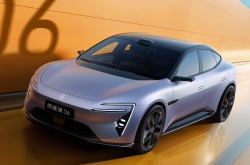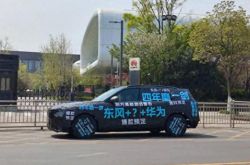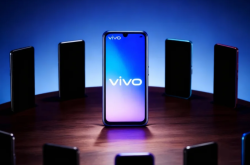Brazil Initiates Green Mobility Exam, Didi Forms Team for Overseas Response
![]() 11/28 2025
11/28 2025
![]() 482
482
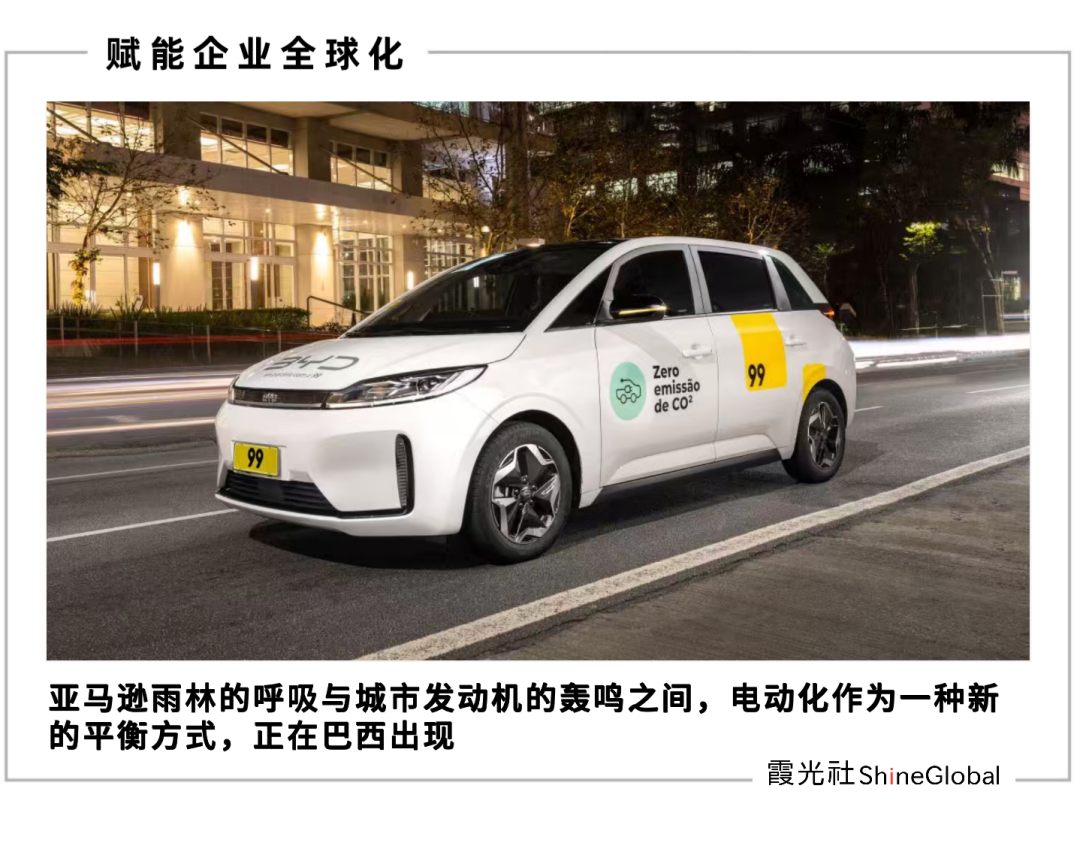
Author: Yang Zi
Editor: Liu Jingfeng
On November 22, the 30th United Nations Climate Change Conference (COP30) concluded amidst Brazil's humid air.
As the Earth approaches its first dangerous 'climate tipping point,' the urgency of climate issues cannot be overstated. This year marks the 10th anniversary of the Paris Agreement, and Belém, the gateway to the world's largest tropical rainforest—the Amazon—served as the host city for COP30.
The Amazon rainforest stores vast amounts of carbon. Paradoxically, 91% of the damage to Brazil's Amazon forest is linked to human-driven illegal activities, such as large-scale ranching and illegal mining. Meanwhile, the local government is constructing a highway across the Amazon rainforest to improve transportation accessibility.
The pulse of transportation and urbanization is closely intertwined with the heartbeat of the tropical rainforest, necessitating new balance between survival and development.
Leaders, scientists, NGOs, and civil society representatives from around the globe gathered on the edge of the Amazon rainforest to discuss emission curves, climate financing, and green transitions. Simon Stiell, Executive Secretary of the UN Framework Convention on Climate Change Secretariat, stated at the closing plenary that the global transition to a low-emission and climate-resilient society is irreversible and represents the future trend.
Low-carbon, green, and environmentally friendly have become the annual keywords for the world's largest tropical country. From nations to enterprises and even individuals, all are engaging in this green movement.
To this end, Didi's Brazilian ride-hailing platform, 99, recently announced that its electric mobility category, 99electric-Pro, now covers five major cities: São Paulo, Brasília, Porto Alegre, Goiânia, and Curitiba. Launched in São Paulo in July 2024, 99electric-Pro is Brazil's first ride-hailing category offering services through both pure EVs and hybrid vehicles. As of now, over 30,000 electric and hybrid vehicles are registered on the 99 platform, having served more than 27 million passengers, traveled a total distance exceeding 245 million kilometers, and reduced CO2 emissions by approximately 31,200 tons—equivalent to planting about 245,000 trees.
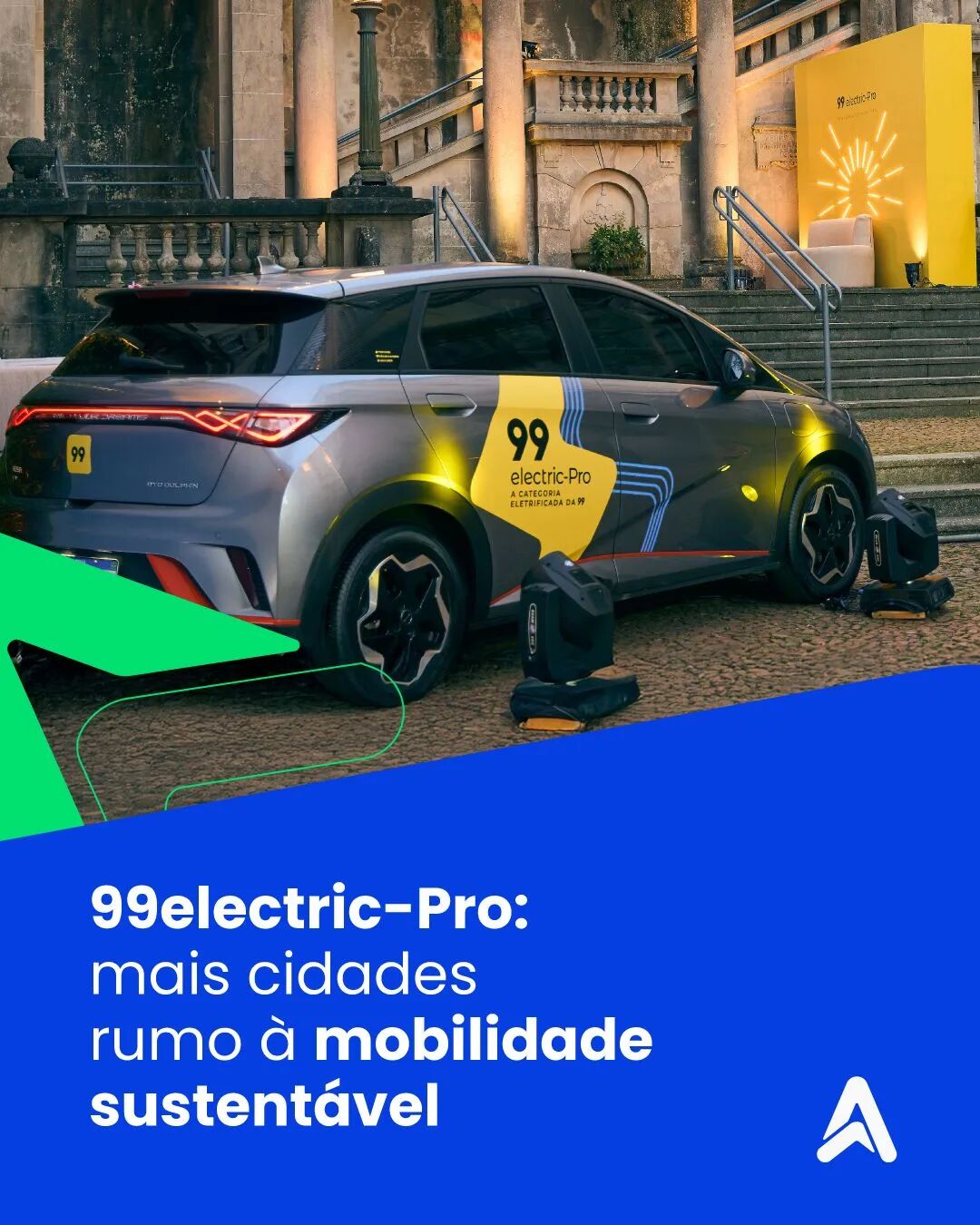
Little known is that Brazil, covering two-thirds of the Amazon rainforest, also suffers from high fuel prices, traffic congestion, and urban sprawl. Didi's (99's) electrification exploration in Brazil serves as a representative local case study, reflecting market trends amidst COP30: Is Brazil's transportation system entering an era where 'electrification is inevitable' amidst the global green transition? What are Didi/99's localized strategies and the platform's role in this context? How can Brazil's electrification market be understood compared to China's?
Beyond the conference venue, a more city-centric and livelihood-focused transformation is underway.

Living in São Paulo, traffic often makes one forget the city's boundaries.
During morning rush hours, taxis and private cars crawl along, surrounded by dense smog and engine noise. Drivers, their hands sweaty, grip the steering wheel as the fuel gauge ticks upward, reminding them of soaring fuel costs. Subways are packed, and buses are full to capacity, with passengers crammed like sardines, breathing in air mixed with gasoline fumes and sweat.
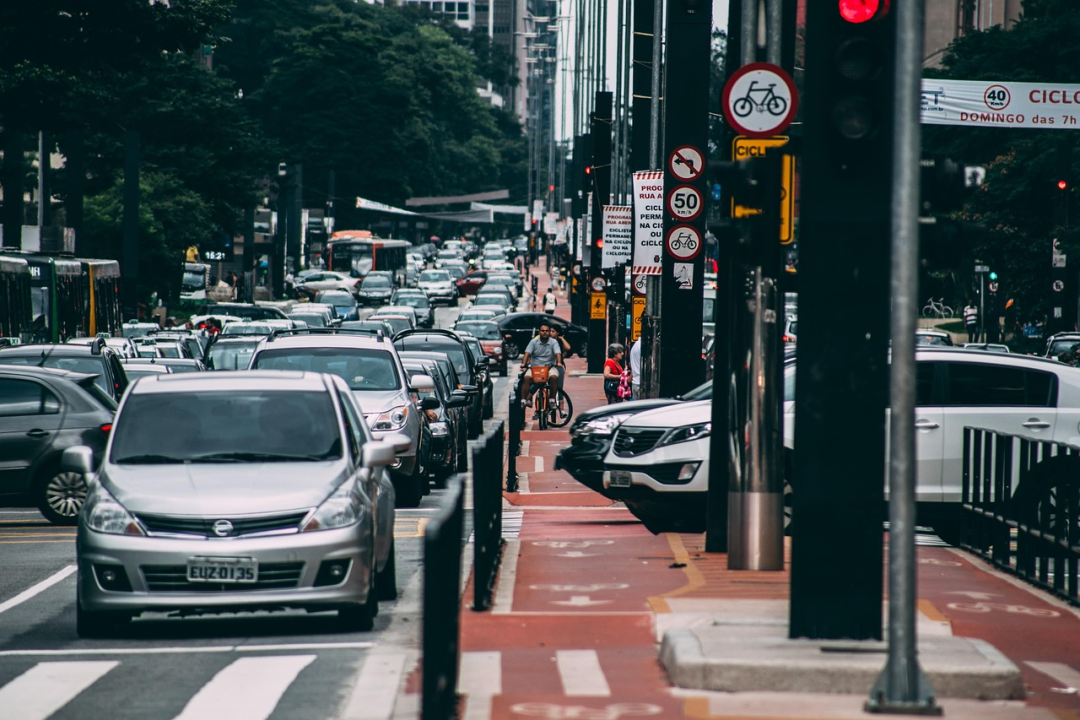
This scene is merely a glimpse of the endless traffic flowing through Brazil's streets daily. Behind it lies a long-ignored reality: congestion, fuel price structures, and inadequate transportation infrastructure are accumulating pressure on urban mobility.
Meanwhile, in Brazil's first-tier cities like São Paulo, as urban development progresses, residential areas increasingly expand toward the city's periphery, while urban rail and bus network extensions lag significantly. This is because downtown land is expensive, and population density is nearly saturated. New residential areas have surged in peripheral zones 30–50 kilometers from the city center, such as Itaquera, Guarulhos, and Osasco. The city's spatial layout resembles a typical 'onion ring,' with each expansion increasing commuting distances and, consequently, daily travel times for residents commuting to work or school.
As a result, many endure long waits and congestion during their daily commutes. In 2024, São Paulo's average congestion level was 42%, with an average driving speed of approximately 22.1 km/h. Around 152,000 São Paulo residents face daily commutes exceeding two hours each way. Data from Brazil's National Traffic Research (Portal do Trânsito) shows that São Paulo drivers waste over 111 hours annually in traffic.
Congestion is one issue; worse still, traffic fatality rates are climbing. In the first 11 months of 2024, São Paulo recorded 5,594 traffic deaths, averaging over 16 per day. In the first quarter of 2025, São Paulo state saw 1,416 traffic fatalities, a decade-high.
Behind congestion and traffic accidents lies Brazil's structural transportation issues: the urban bus system relies heavily on ground buses and limited rail transit, with public transportation capacity failing to keep pace with urban expansion.
To ensure reliable daily commutes, the only option for workers seems to be hailing a ride.
According to Statista, the user penetration rate for ride-hailing services in Brazil is projected to reach 32.8% in 2025. Amidst urban changes, ride-hailing has become an increasingly vital alternative. With few subway lines and buses stuck in traffic, ride-hailing has gradually evolved into a 'quasi-public transportation' service, shouldering the practical pressures of urban mobility.
Notably, the Brazilian government has recently introduced electrification incentives, setting clear timelines for urban emission reductions. From vehicle purchase subsidies to tax breaks and investments in EV infrastructure, these measures are promoting green mobility as a quantifiable urban planning metric. Meanwhile, charging infrastructure is growing at double-digit rates, with charging station density increasing by 12%–15% annually over the past three years (varying slightly by state), primarily concentrated in southeastern core cities, providing practical support for large-scale EV adoption.
For ride-hailing drivers, electrification is not only environmentally friendly but also economically viable. Brazil's state gasoline tax (ICMS) reaches up to 20%, keeping fuel prices high. According to 99's official data, drivers providing '99electric-Pro' services earn approximately 60% more on average than those driving traditional fuel vehicles, thanks to lower charging and maintenance costs.
EVs and ride-hailing form a natural synergy, with EVs achieving scaling (scale) first in ride-hailing scenarios due to controllable routes, costs, and rapid responses to urban commuting demands. The expansion of 99electric-Pro suggests a Quietly changing (quietly transforming) shift: a green, sustainable, and quantifiable commuting corridor is reshaping urban mobility ecosystems in Brazil's major cities.

In fact, Brazil is nearly one of the world's most suitable countries for EV development, boasting an energy structure perfectly aligned with electric mobility.
According to Brazil's Energy Research Agency (EPE), renewable energy accounted for 88.2% of its electricity mix in 2024. Wind and solar contributed approximately 23.7% of power generation, while hydropower remained stable, and wind and solar grew rapidly. Compared to persistently high fuel prices and tax fluctuations, Brazil's stable electricity prices make EV operating costs more manageable.
In other words, the economic model for EV operations is inherently superior to that of fuel vehicles.
Additionally, policy support for new energy vehicles and accelerated charging infrastructure deployment signal that Brazil's electrification tipping point is approaching.
Firstly, during COP30, Brazil prioritized tripling global renewable energy capacity and doubling energy efficiency by 2030 in its Action Agenda.
Secondly, at COP30, President Lula and other leaders used Chinese-brand EVs as official vehicles. Over the past few years, Chinese automakers like BYD, Great Wall Motors (GWM), and Chery have entered the Brazilian market en masse, making EV models more affordable. In October 2025, monthly sales of Chinese-brand EVs (including EVs and hybrids) in Brazil neared 25,000 units.
Thirdly, the number of public and semi-public charging stations in Brazil has surged. According to energychannel data, public charging points exceeded 16,800 by mid-2025, with DC fast-charging stations growing by 59% in six months.
Ride-hailing platforms are addressing early market challenges such as high EV purchase costs, charging anxiety, and range management through scaled orders, driver incentives, and optimized dispatching. China's decade-long electrification evolution provides a practical template for developing markets.
During COP30, Didi participated in the China Pavilion's 'Building Green, Low-Carbon, and Beautiful Cities' side event. Mao Chenyu, Didi's head of international food delivery and Spanish-speaking region mobility, stated in his speech, 'Digital Mobility Drives Urban Traffic Decarbonization,' 'By late 2024, nearly 70% of service miles on Chinese platforms were covered by pure EVs, reducing emissions by 4.82 million tons through electrification alone. Against the backdrop of global green development, we are actively promoting China's green mobility model overseas.'
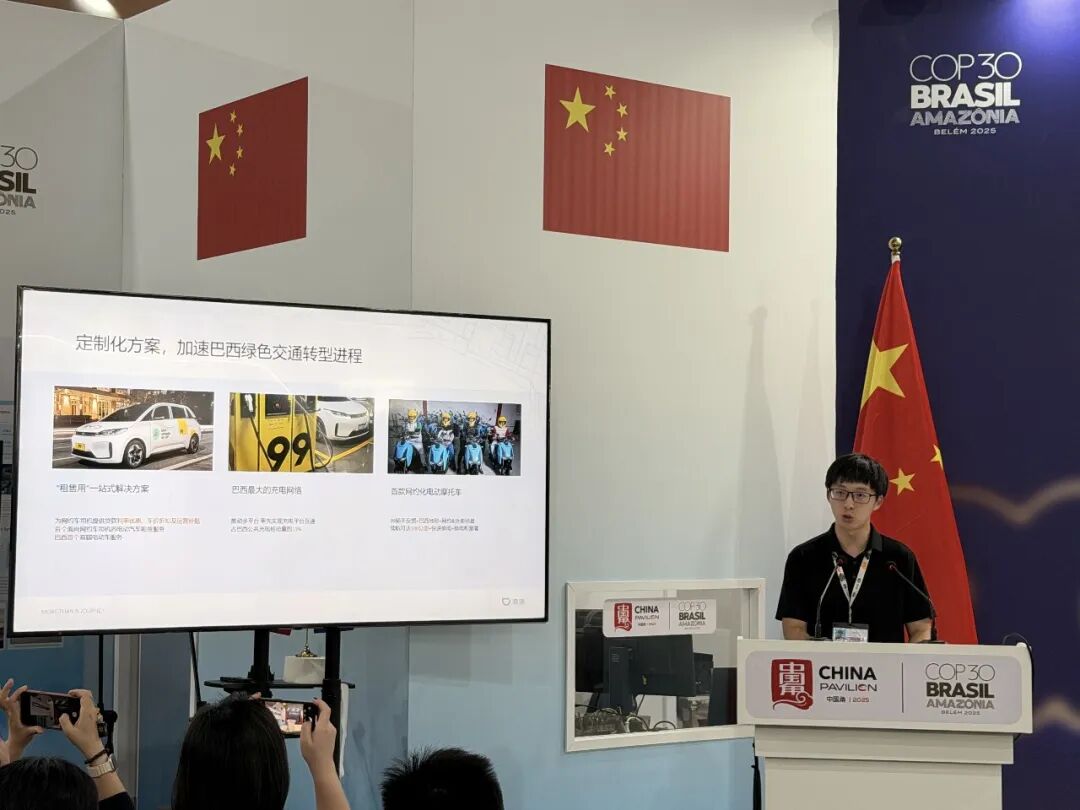
Mao Chenyu, Didi's head of international food delivery and Spanish-speaking region mobility, shares insights at COP30.
Meanwhile, 99 can leverage Chinese platforms' experience in new energy vehicle fleet management and dispatching, applying it to Brazil to enhance EV operational efficiency.
Xia Guang She believes that Brazil's decisive window for electrification may lie in the next three years. On one hand, the government's national electrification roadmap will enter a Dense landing (intensive implementation) phase around 2026. On the other, Brazil's public and private charging infrastructure will reach a 'usable coverage' stage in the next 2–3 years, truly supporting scaled operations. From a capital cycle perspective, the global green investment window is concentrated between 2025–2028, a critical period for accelerating the construction of the new energy supply chain.
COP30 has redirected global attention to South America, further accelerating Brazil's urban transportation emission reduction timeline. The next three years will determine the pace of Brazil's EV industry and market landscape.

From a global perspective, three conditions are essential for a country's transportation electrification to truly take off: platform scale, infrastructure, and a replicable mature model.
On the streets of Brazil's major first- and second-tier cities, 99's iconic yellow vehicles are frequently seen navigating busy neighborhoods and extending into residential areas at the city's edge. Having operated in Brazil for over a decade, 99 has become the country's second-largest mobility platform.
Originally a Brazilian mobile mobility service provider founded by young entrepreneurs in 2012, 99 is particularly noted for its AI translation feature among global travelers who do not speak Portuguese, enabling real-time communication with drivers.
In 2017, Didi invested in 99 and fully acquired it the following year. Its market scale endow (endows) it with unique advantages in promoting electrified mobility at a city-wide level.
As early as 2022, 99 spearheaded the 'Brazil Sustainable Mobility Alliance,' aiming to increase EV penetration in new vehicle sales to 15% by the end of 2025 and establish 10,000 new public charging stations in Brazil. 'The 'Sustainable Mobility Alliance,' led by 99, now comprises 23 members, effectively driving Brazil's green transportation transition,' said Paula Maia, 99's Senior Manager of New Energy Vehicle Strategy and Operations, at COP30. This signifies that green mobility has been integrated into the core fabric of urban operations.
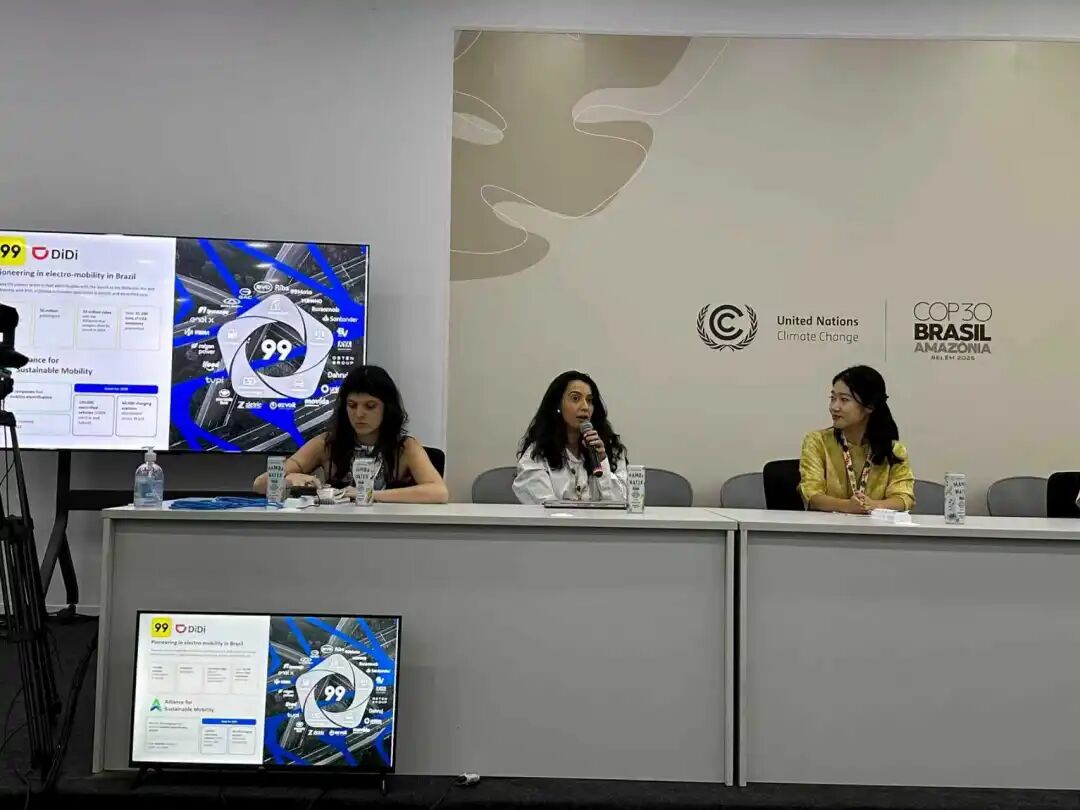
Paula Maia, 99's Senior Manager of New Energy Vehicle Strategy and Operations, shares insights at COP30.
Additionally, Brazil's urban transportation network extends beyond four-wheeled vehicles. Two-wheeled vehicles, serving as the city's capillaries, handle a significant volume of short-distance, high-frequency commutes. Launched in 2022, 99's two-wheeled mobility category, 99Moto, had surpassed 2 billion orders by October 2025, covering over 3,300 Brazilian towns. Data shows a 30% increase in motorcycle drivers on the platform over the past year, with a 60% rise in delivery orders and a 40% increase in mobility orders completed by motorcycles.
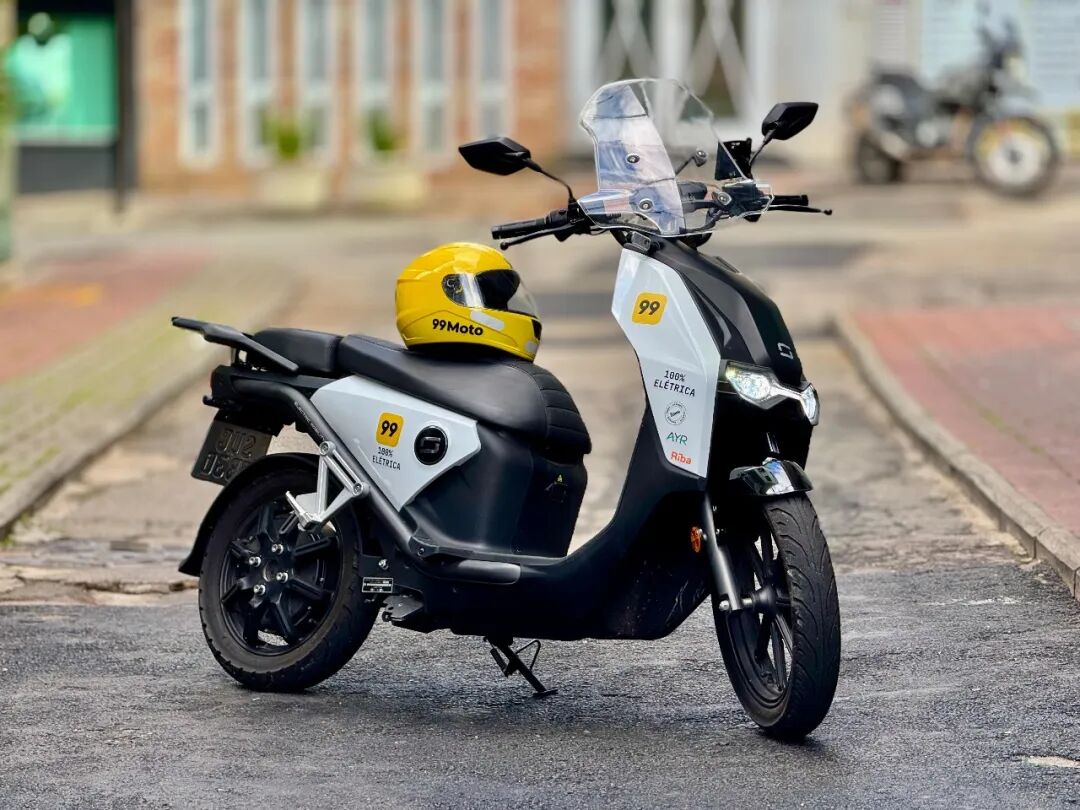
Additionally, 300 electric motorcycles jointly launched by 99 and local Brazilian company Riba Brasil in Belém have already gone live. Compared to fuel-powered motorcycles, electric motorcycles are expected to save riders up to 35% in operation and maintenance costs and reduce carbon dioxide emissions by approximately 1 ton for every 10,000 kilometers driven, akin to injecting green power into the city's veins.
With the launch of 99electric-Pro in five major cities—São Paulo, Brasília, Porto Alegre, Goiânia, and Curitiba—three core pain points will be addressed: high vehicle purchase costs for drivers, inadequate charging station infrastructure, and range anxiety. Once a scale effect is achieved, the tipping point for urban transportation electrification can be rapidly advanced, representing a tangible implementation of platform-driven efforts to integrate electric vehicles into urban transportation systems.
Behind these efforts lies the support of DiDi's global experience. In June of this year, DiDi released the Green Development and Climate Resilience: DiDi's Climate Action Report 2025. The report revealed that by the end of 2024, DiDi's domestic platform had registered over 6 million new energy vehicles, including approximately 5.1 million pure electric vehicles. Data from December 2024 showed that around 68% of domestic ride-hailing service mileage was contributed by electric vehicles. In the Chinese market, the EV travel ecosystem is already mature, with replicable success stories spanning charging network construction, driver financing solutions, and intelligent fleet dispatch and matching. Attempting the same path in Brazil can be seen as an engineering feat of transplanting proven experience into fertile ground, reducing trial-and-error costs while significantly accelerating implementation speed and efficiency.
For cities, the trend toward electrification represents not only a shift in energy structure but also the construction of new commuting arteries. Faced with expanding urban landscapes and evolving civilizations, green mobility offers greater stability and long-term value, filling gaps left unaddressed by public transportation. On the fringes of tropical rainforests and amidst energy transitions, every speeding 99 vehicle on Brazilian streets is quietly reshaping the green future of urban transportation.

